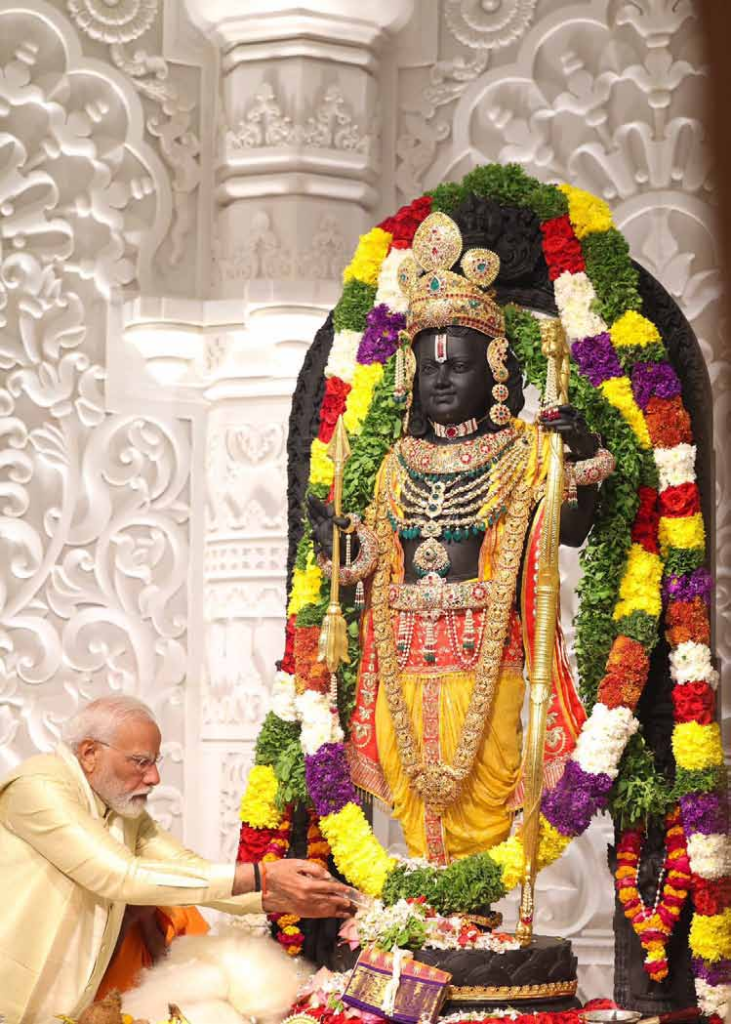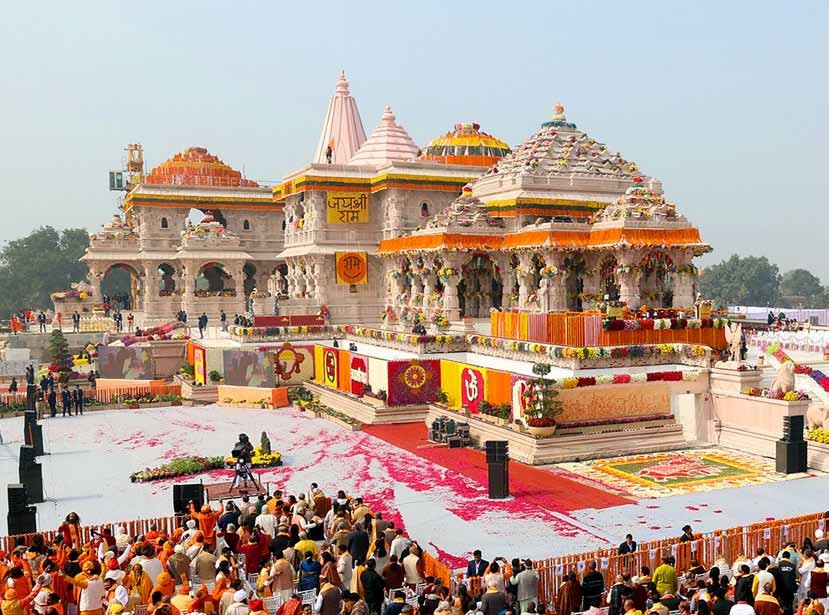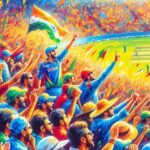On January 22nd, coinciding with the inauguration of the Ram Temple in Ayodhya by Indian Prime Minister Modi, a worship event was held at the Varadaraja Perumal Temple in Ponnalai, Jaffna. This event, organized by the Siva Senai organization of Sri Lanka, has garnered attention due to its focus on Lord Rama, a deity not commonly worshipped in Jaffna.
In an effort to understand the significance of this event, we conducted an interview with Maravanpulavu K. Sachithananthan, the leader of the Siva Senai organization, seeking insights into the reasons behind organizing a special worship for Lord Rama in Jaffna.
Could you elucidate the reasons behind the special worship ceremony held in Jaffna, particularly in the context of Lord Ram not being a widely revered deity in that region?
Rama stands as a symbol, embodying a profound cultural heritage and acting as a guiding light for virtuous conduct and ethical living. Rama represents a figure that transcends traditional boundaries of religious worship and geographical confines, embodying a universal appeal.
He epitomizes an inner spiritual ideal, fostering a form of devotion that is deeply personal and intimate. This unique aspect of his veneration is such that it does not necessitate a physical temple; rather, he can be worshipped within the inner sanctum of an individual’s heart.
His persona is a composite of various virtues — from martial prowess and bravery to profound love and unwavering marital fidelity. This multifaceted symbolism demands a rational interpretation, highlighting the role of emblematic figures in the progression of civilization. The significance of Rama lies not just in his historical or mythological existence but in his representation of wisdom and moral guidance.
While historical evidence regarding his actual existence, birthplace, or life events remains sparse, archaeological findings near the Sarayu River in Ayodhya have shed light on the ancient roots of his worship. These discoveries, indicating the presence of a temple dedicated to Rama 500 years ago, formed the basis for the construction of the new temple at this historic site. This blend of archaeology and symbolism underscores Rama’s enduring impact as a cultural and civilizational icon.
In an episode dating back five centuries, Babur, the founding emperor of the Mughal dynasty, undertook a consequential visit to the esteemed Ram Temple located in Ayodhya. Babur, renowned for his erudition, was well- versed in the lore surrounding Rama. It was during his sojourn near this temple that he issued a decree for its destruction.
However, this directive was not merely an act of religious or cultural antagonism towards the figure of Rama. Babur’s intentions went beyond the mere destruction of the temple’s physical structure. He aimed at the core of India’s knowledge-based traditions, which were intrinsically interwoven with the narrative of Rama and manifested in various facets of Indian society – including economics, politics, culture, and martial prowess.

By targeting the symbol of Rama, Babur sought to efface these dimensions of Indian identity, deeming them a hindrance to his broader objective. This deliberate act of demolition was more than an architectural obliteration; it represented an attempt to erase a collective historical and cultural consciousness deeply embedded in the ethos of Rama.
Babur’s underlying ambition was to replace these indigenous values and memories with the Islamic tenets of the Mughal empire, thereby reshaping the cultural and historical landscape of India.
Throughout history, the pattern of cultural and religious imposition by invaders has been a recurring theme, with numerous instances across different regions. This phenomenon was not unique to Babur or the Mughal Empire.
During their colonial endeavours in Sri Lanka, the Portuguese demolished revered Hindu temples such as Thiruketheeswaram, Thirukoneswaram, and Thondeeswaram,replacing the latter with a Christian church.
This pattern of erasing pre-existing religious structures and supplanting them with those of the invaders’ faith was evident across the Indian subcontinent. In Gujarat, the iconic Somnath Temple faced a similar fate, around 900 years ago, with defenders subjected to brutalities and the temple itself being subjected to looting and destruction.
However, the resilience of the local populations in these areas is noteworthy. In Ayodhya, for instance, the local community has been tirelessly endeavouring for over 500 years to rebuild the Ram Temple. Such efforts symbolize not just the restoration of a physical structure but the reclamation of a cultural and spiritual identity that had been systematically targeted.
Could you elaborate on the significance of the recent special worship conducted in Ponnalai?

The decision to conduct special worship in Ponnalai was deeply symbolic. This event has to be perceived not merely as a religious ceremony but as a pivotal moment marking the resurgence of our region’s rich traditions and cultural heritage. The day, which historically symbolized an attempt to erode our cultural and traditional values, has been transformed into a beacon of their revival.
This event represents another turning point in history, where we reclaim our spiritual practices and legacy in areas like politics, valour, economy, and culture. The opening of the Ram Temple stands as a potent symbol of this reclamation.
Our participation in the worship at Ponnalai was an embodiment of this sentiment, rooted in our tradition to honour and celebrate such transformative moments in our history. This ceremony was more than a ritual; it was a collective affirmation of our enduring cultural identity and a testament to our resilience in the face of historical adversities.
How do you interpret our traditional allegiances in the context of Sri Lanka’s rich mythological history, often referred to as the land of Ravana?
The narrative of Rama and Ravana, central to the epic Ramayana, transcends mere allegorical interpretation, especially in the context of Sri Lanka’s cultural identity. The question of whether our traditions align more closely with Rama or Ravana is intricate, considering the complex layers of this ancient narrative.

Contrary to the actions of historical conquerors like the Mughals or the Portuguese, whose invasions were driven by motives of religious imposition and cultural eradication, the conflict between Rama and Ravana in the epic is fundamentally different.
The culmination of this mythological conflict, where Rama defeats Ravana, was not an act grounded in the desire to impose ideologies or destroy traditions. Instead, it stemmed from a deeply personal feud– Rama’s response to Ravana’s abduction of his wife, Sita.
It’s crucial to understand that Rama’s actions, as depicted in the Ramayana, were not motivated by a premeditated intention to annihilate Ravana or to dismantle the cultural fabric of Lanka. Rama did not embark on his journey with the objective of conquering Lanka or subjugating its people to his beliefs. His journey to Lanka was a reactive one, driven by the personal grievance of his wife’s kidnapping rather than a calculated plan to overthrow or undermine the existing civilization.
Thus, when considering the legacy of these mythological figures in the context of Sri Lanka’s cultural and traditional identity, it’s important to distinguish between the symbolic narratives of ancient epics and the historical realities of conquests and cultural dominance. The Ramayana offers a story that is deeply embedded in the cultural psyche, resonating through generations, but its interpretation and the allegiances it inspires are as diverse as the people who cherish it.
In the context of the North and East of Sri Lanka, where diverse religious practices prevail, is the worship of Rama viewed as a foreign element? Are there plans to introduce Rama worship in these regions?

Our approach towards the existing religious practices in the North and East of Sri Lanka has been one of non-interference and respect for the established worship methods of the region. We do not advocate the adoption of Rama worship as the sole path to spiritual fulfilment or salvation. It’s important to acknowledge that devotion to Rama already exists among thousands of devotees, particularly evident in daily worship at the Ponnalai Varadaraja Perumal Temple. This devotion emerges spontaneously from the hearts of the worshippers, not as a result of any directive from us.

The reconstruction of the Ram Temple at the site where the Babri Masjid once stood is indeed a significant historical event. Our worship and gratitude are in recognition of this event and its historical and cultural implications. It is not an attempt to impose this form of worship on others. We honour the diversity of religious beliefs and practices, and our focus remains on celebrating this momentous occasion rather than advocating for a change in the religious practices of the local populace.



